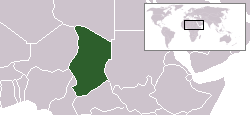By NewsDesk @infectiousdiseasenews
UN health officials are reporting a chikungunya outbreak in Chad, in north-

The index case of the epidemic is a 62-year-old farmer who has spent the entire rainy season in her field located in the Abougoudam Zone, about 20 km from Abéché with information of no travel outside the district.
Chikungunya virus (CHIKV) is transmitted by the bite of Aedes mosquitoes, particularly Aedes aegypti and Aedes albopictus. In humans bitten by an infected mosquito, the disease symptoms usually appear after an incubation period of three to seven days (range 1- 12 days).
CHIKV can cause acute, sub-acute, and chronic disease.
In acute disease, symptoms develop abruptly and include high fever, headache, myalgia and arthralgia (predominantly in limbs and large joints). The appearance of a maculopapular rash is also frequent. Severe forms of the disease are rare. Symptoms usually resolve in 7-10 days, although arthralgia and joint stiffness may persist intermittently for several months.
The disease shares some clinical signs with dengue and Zika, and can be misdiagnosed in areas where they are common. As there is no cure, treatment is focused on relieving the symptoms.
- Ukraine reports 16 salmonella outbreaks so far this year
- Lyme Disease: University of Idaho leads research team studying movement of tick-borne disease
- Canada: Public Health Advisory issued, Increase in Gonorrhea cases in Nunavut
- New Jersey reports first two West Nile virus cases of year
- Chagas disease: Risk of developing cardiac disease doubles for asymptomatic infections
- African sleeping sickness: Togo eliminates as public health problem
- Antiviral used to treat cat coronavirus also works against SARS-CoV-2

